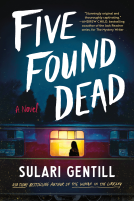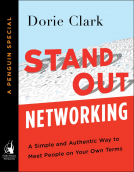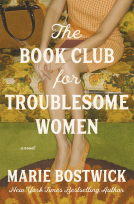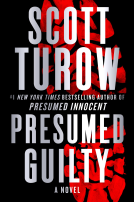
Stopping the Noise in Your Head
The New Way to Overcome Anxiety and Worry
by Reid Wilson
This title was previously available on NetGalley and is now archived.
Send NetGalley books directly to your Kindle or Kindle app
1
To read on a Kindle or Kindle app, please add kindle@netgalley.com as an approved email address to receive files in your Amazon account. Click here for step-by-step instructions.
2
Also find your Kindle email address within your Amazon account, and enter it here.
Pub Date May 03 2016 | Archive Date Jul 11 2018
HCI Books | HCI
Description
If you or someone you love suffers from excessive worry, anxiety, panic, OCD, or phobias, you know how crippling it can be. Of course, worry can be an important asset when it forces our attention on problem-solving. But anxious worrying can cause us to unnecessarily focus on a threat, to retreat and avoid, and to seek reassurance and safety—which is no way to foster a life of growth and excitement. In his fifth published book, Dr. Reid Wilson proposes a groundbreaking, paradoxical approach to overcoming anxiety, worry, OCD, panic, and phobias by moving away from comfort, confidence, and security and willingly moving toward uncertainty, distress and discomfort. Through the use of unconventional strategies, readers will learn how to confront anxiety head-on and step forward into the face of threat. Drawing on a range of sources—from firefighters and fitness instructors to Sir Isaac Newton and Muhammad Ali—Stopping the Noise in Your Head demonstrates the importance of shifting our perspective and stepping toward our challenges in order to regain control of our lives.
A Note From the Publisher
Marketing Plan
Author is on a perpetual speaking tour at professional conferences
Author is sought out resource for media as an expert on 'stress'PR firm will assist in the launch of the bookRadio interview tour will be conducted nationallyEarly reviews and giveawaysAuthor was recently appointed Founding Clinical Fellow of the Anxiety and Depression Association of America (ADAA).
Available Editions
| EDITION | Other Format |
| ISBN | 9780757319068 |
| PRICE | $16.95 (USD) |
Featured Reviews
This book is an useful tool in dealing with anxiety & worry. Anxiety & Worry is not something you can turn off with a blink of the eye. This book gives you the tools to start eliminating the noise in your head.
 Angela S, Reviewer
Angela S, Reviewer
I absolutely love this book. I have OCD and Social Anxiety Disorder and although the book is focused on general anxiety, it give wonderful tips and a fresh perspective on how to deal with mental health. When this book is released I will be purchasing it in print it will making a great reference book.
 Stephanie T, Librarian
Stephanie T, Librarian
Reid Wilson, PhD, author of titles including Don’t Panic! and Playing With Anxiety, has written a book with a title that will resonate with many people.
Frequently, we are told to turn to happy thoughts (“go to your happy place”) when the mental machinations seem overwhelming. Dr. Wilson’s approach is different: he encourages us to move TOWARD discomfort, distress and anxiety. This seemingly paradoxical approach may cause some readers to reject it out of hand, as it can be frightening to consider moving toward whatever is causing our anxiety. But his arguments make a lot os sense, and his work is packed with scientific evidence, entertaining examples, and common sense exercises that seem likely to help many.
Thank you to HCI Books and NetGalley for providing a copy in exchange for my honest review. Five stars. This one is a keeper!
 Eve W, Reviewer
Eve W, Reviewer
The book talks about worries and then the other spectrum of them becoming never quieting and festering thoughts always on our minds, other words anxiety building over time.
It compares anxiety of varying sorts and how it plays away on our vulnerability and thoughts of not coming across in many ways either positive or negatively.
It talks of triggers in life causing anxiety from trauma and situations before where you are now and action g on urges and challenging yourself by putting the reader/us through situational examples within the book.
There are also a few visual diagrams to break up the text in areas to explain cycles of processes throughout.
Overall, this book is a good read if you suffer anxiety or know someone who suffers purely because it's situational and allows the read to feel like they're understood and not judged by how they feel.
Many thanks to the publishers for allowing me a copy to review!
 Mary C, Librarian
Mary C, Librarian
This book was helpful and inspiring with many practical suggestions for helping with anxiety. I liked how it was broken down into manageable sections, however I found it to be a little repetitive.
 Catherine p, Reviewer
Catherine p, Reviewer
Really helpful book in dealing with anxiety that you can leave and go back to when you feel able to.
 Librarian 296405
Librarian 296405
I have read numerous books on the subject of silencing the inner voice and dealing with worry. Amongst the best are Albert Ellis's How To Stubbornly Refuse To be Miserable About Anything and Creating a Bug Free Mind by Andy Shaw. This book manages to achieve a greater depth than most books I have read and remains authentic and relatable without shirking from the fact that you need to put these strategies into practice. The most helpful insight in there is that worry is intended (at its outset) to be helpful and push you towards solving a situation. There were other insights (such as how we think worrying itself is the work) which I have actually only seen expanded upon in rather obscure books rather than mainstream publications. It is clear the authors not only know what they are talking about but genuinely how to master the inner voice. Highly reccomended.
 L. J, Reviewer
L. J, Reviewer
'You've been marching to the beat of anxiety's drum' this was one of many, many quotes from the book that was so relatable to me.
Anxiety is all consuming, living in a state of hyper awareness, using avoidance as a coping mechanism i know only too well how badly it affects sufferers.
This book was full of helpful information on dealing with your anxious mind, offers tips to try and help quieten your busy mind and help you shift your focus of attention.
Written in a friendly manner by a fellow sufferer, its easy to read, relatable and full of helpful ideas to make things that little bit easier.
Thank you to the author, publisher and Netgalley for allowing me to read this book in return for an honest review.
This book was very helpful. Something that I can re-read over and over.
3.5 stars
The Author of this book, Reid Wilson Ph.D., is a licensed psychologist who directs the Anxiety Disorders Treatment Center. He is also Adjunct Associate Professor of Psychiatry at the University of North Carolina School of Medicine. His approach in this book is to move towards your discomfort, your uncertainty, to do what makes you uncomfortable. He uses examples such as firefighters, professional athletes and vignettes as examples of how to confront anxiety head on. He utilizes a paradoxical approach toward anxiety. He urges readers to change their perspective/thoughts to treat their anxiety. He points out in the beginning of the book that "What you often worry about isn't worth your attention."
Everyone experiences anxiety from time to time. Occasional anxiety is a normal part of life. One might be anxious about an upcoming doctor appointment, your child going away to college, having to make an important decision, asking someone out on a date, etc. But for others anxiety can be crippling and can be an event specific or an everyday thing which can become worse over time. For those with panic attacks, social anxiety, generalized anxiety disorder, OCD, phobias, (to name a few) anxiety can be devastating and affects their life on many levels. How many invitations have those with anxiety turned down, how have they limited their day to day activities, how has anxiety impacted their relationships or their jobs, etc.
The Author encourages people to make a list of what anxiety has caused them and then to make a list or "outcome picture" to show what they want in their lives in the future. What new things they want to try, places they may want to travel, parties they want to attend, jobs they want to apply for, etc. Then they need be uncomfortable, to face their fear, to act, to get the outcome, they desire. He has unconventional ways of achieving this that he believes that if you can welcome what you are feeling it will alleviate your anxiety. For example, when someone is experiencing anxiety he/she may think "I've got to back away from any threat so that I can get rid of my fearful thoughts and feelings." He then wants you to think (tell yourself) "It's fine that they just showed up. I can handle these feelings. I don't have to do anything with them." and "These are exactly the thoughts [of feelings] I want to have." You are not saying that you want the thoughts to continue but you are accepting the thoughts you are experiencing. He urges people to look at their fearful thoughts as noise and not signals. When the thoughts pop up to mentally step back when you have that thought that tells you “Get me out of this" and notice the thought and realize it is there and not to fight it, to accept it. He believes this will make anxiety more bearable because you are dropping your resistance.
I think this book is good for reinforcing what most people might already know. I believe the vignettes may be useful to let the reader know that he/she is not alone. If someone is in treatment for anxiety they be familiar with many of the treatment(s) for anxiety. I like that this book was in layman's terms and stresses not to avoid things but to face them but do so with the attitude that it's okay to be anxious, I will get through this, etc. Easier said than done - his point was to give anxiety less power. You know to feel the fear but do it anyway...such as exposure exercises but while being aware of your thoughts and not resisting them. An example of an exposure exercise is: someone is afraid of elevators should ride elevators to elevate anxiety.
I liked how he showed many automatic thoughts that people think in the beginning of the book. I believe that most readers will identify with a lot of them. Think of something which causes you anxiety. Think of all the thoughts that pop into your mind. Imagine you are going to the doctor because you have a health concern. You don't know what the outcome will be, and you automatically have thoughts about it "What if this is serious", "What if I am really sick", "What if this is incurable" etc. You still go to your doctor appointment even though you are anxious. For someone with a crippling anxiety or fear this is harder to do but you still need to go through it. For example, you have a fear of public speaking and you have been asked to do a presentation at work. You need your job, but your anxiety is crippling. You sweat profusely, your hands shake, your voice trembles, you are embarrassed by this. You fear the humiliation. You fear judgement. You have feelings of dread and automatic thoughts associated with this. The author tells you to accept them. To tell yourself it's OK if my hands shake, I accept that. I am going to sweat, I'm okay with that. He states creating a paradox in your thinking will confuse your anxiety - make it stop and say "what? you are okay with this?" and by doing so your anxiety will lessen.
Will reading this book make your anxiety go away - I do not believe so - but it is a beginning. For some it will be reinforcement, for some a new way of looking at their thoughts, for some it might work for them. I think the important thing is finding what works for you.
Thank you to HCI books and NetGalley who provided me with a copy of this book in exchange for an honest review.
 Bookseller 431166
Bookseller 431166
I found this insightful and well written. The concepts were clear and didn't go overboard with clinical language as I've seen other books do.
 Greg A, Reviewer
Greg A, Reviewer
A very insightful, informative, and paradoxical book, I would say. My main take away in this book is we have to embrace anxiety so we can stop it from bothering us.
The book is written in a very conversational yet informative tone. Average readers like me can easily understand the concepts; making it easy to read despite the number of pages it has.
A very important part of this book is the one where the author really describe the steps in handling anxiety first, by describing his patients situations and how each of them go through the journey of coming to terms with their own anxiety. The author also presented an appendix for those who need professional help.
 Reviewer 423390
Reviewer 423390
I must apologise for not being able to review this book after you so kindly accepted my request. I have had an unfortunately challenging time, but am now free to resume reading and reviewing. I hope that you will not hold my difficulties against me in future requests


















